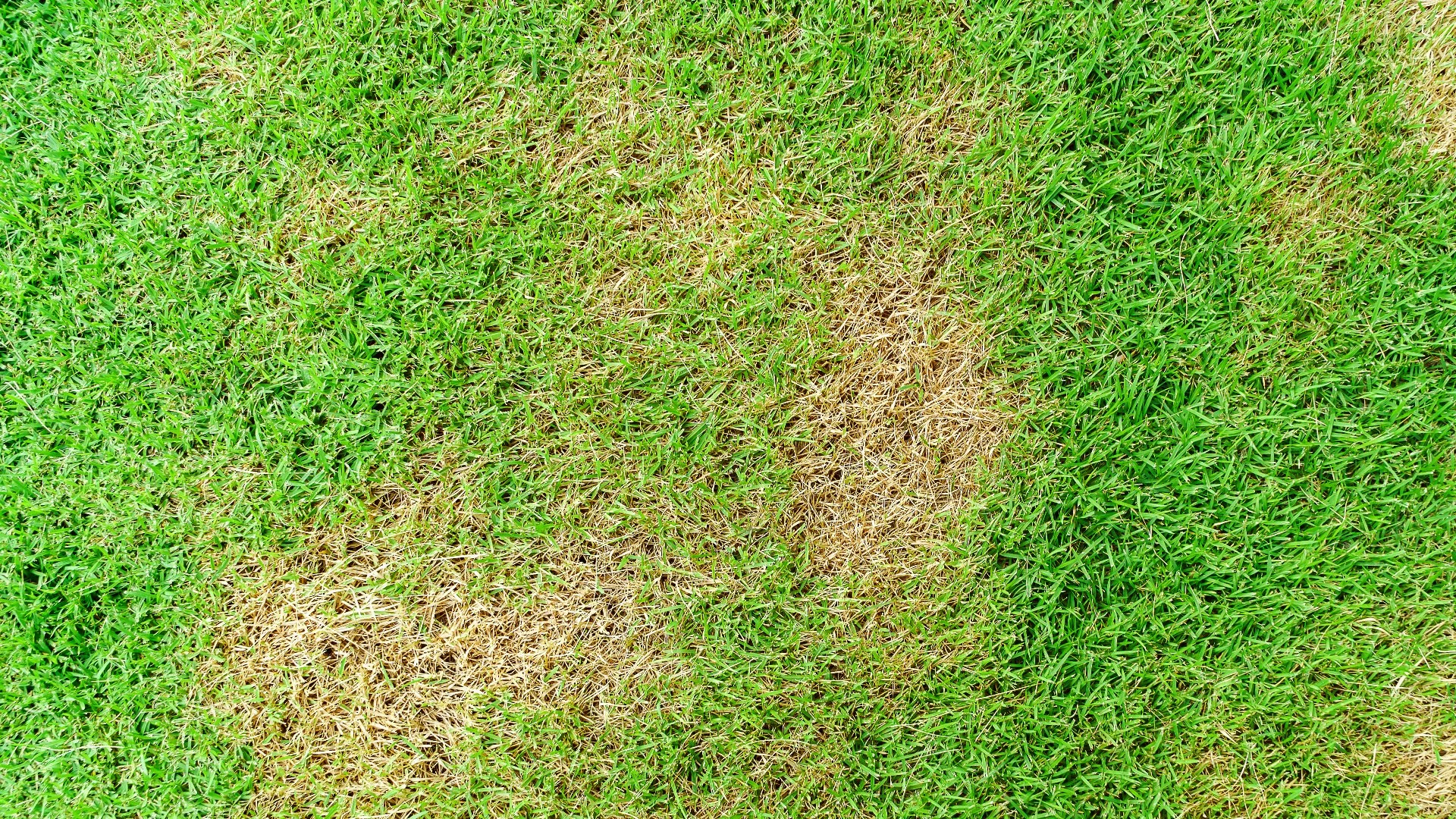Lawn diseases are one of your turf's worst enemies, and a common one here in Colorado is none other than necrotic ring spot. This damaging fungal disease causes light green or tan-colored rings of dead grass and kills its roots, severely hindering its health when left to its own devices. If it infects your lawn, you'll want to act immediately and schedule curative treatments to eliminate it. However, these treatments won't reverse any damage already sustained, so you'll also want to opt for lawn care services to help it recover, including fertilization, aeration, and overseeding.
What is necrotic ring spot?

Necrotic ring spot is a fungal disease that commonly attacks Kentucky bluegrass, though it can impact other cool-season types. This disease appears as rings of light green or straw-colored dead grass across your lawn. These rings can range in diameter from a few inches to several feet, with the grass in the center otherwise still green and healthy. Over time, it'll continue to spread and create larger dead patches.
Necrotic ring spot doesn't just attack your lawn at the surface but underneath, too. The roots of your grass will become discolored, turning black or brown as a result of them rotting and eventually dying. This disease causes severe damage and can completely overrun your turf if left to its own devices.
Symptoms of necrotic ring spot appear on your lawn in the late summer when temperatures are at their hottest.
If necrotic ring spot invades your lawn, schedule curative treatments immediately.
Not only does necrotic ring spot kill your lawn at its roots, but it also drags down its curb appeal with unsightly rings. If this disease invades, you'll want to act immediately to prevent it from causing additional damage. To do this, scheduling curative lawn disease control treatments is a must. Pros will apply treatments proven effective at eliminating necrotic ring spot so your grass has a chance to focus on rebuilding its strength and health.
Help Your Lawn Recover After a Necrotic Ring Spot Infection by Scheduling Lawn Care Services
While curative treatments are crucial for stopping necrotic ring spot from taking over your lawn further, they can't reverse the damage it has already sustained. Fortunately, that's where lawn care services come in! You'll want to schedule the following services to help nurse it back to health and recover after a necrotic ring spot infection:
- Fertilization: Fertilizing your lawn will provide it with the nutrients it needs to encourage new, healthy growth, rebuild its roots, and reclaim its green color after suffering at the hands of this lawn disease. Maintaining a regular fertilization schedule will also ensure it stays at optimal strength and has a better chance of naturally resisting and fighting off necrotic ring spot should it try to invade again in the future.
- Aeration: Aeration involves pulling up plugs of soil to loosen compaction and create passageways for nutrients and resources like sunlight, water, and air to reach the roots of your grass. With improved access to everything it needs, your lawn can absorb more and recover quicker after this disease.
- Overseeding: Overseeding involves spreading grass seeds over your turf to fill the patches resulting from necrotic ring spot with new, healthy growth. Doing this will make it thicker and denser, enhancing its appearance and building up its defenses against stressors in the future.
Call Us to Sign Up for Our Lawn Disease Control Service
At Mesa Turf Masters, we offer our lawn disease control service to property owners in Grand Junction, Fruita, Palisade, CO, and surrounding areas. If necrotic ring spot infects your lawn, our experts will apply highly effective curative treatments to stop the spread. We also provide lawn care services, like fertilization, aeration, and overseeding, to help it recover afterward. Call us at (970) 434-5440 to sign up today!



Comments (0)
Thanks for your comment!
Thanks for your feedback! Your comments have been successfully submitted! Please note, all comments require admin approval prior to display.
Error submitting comment!
There is a problem with your comment, please see below and try again.